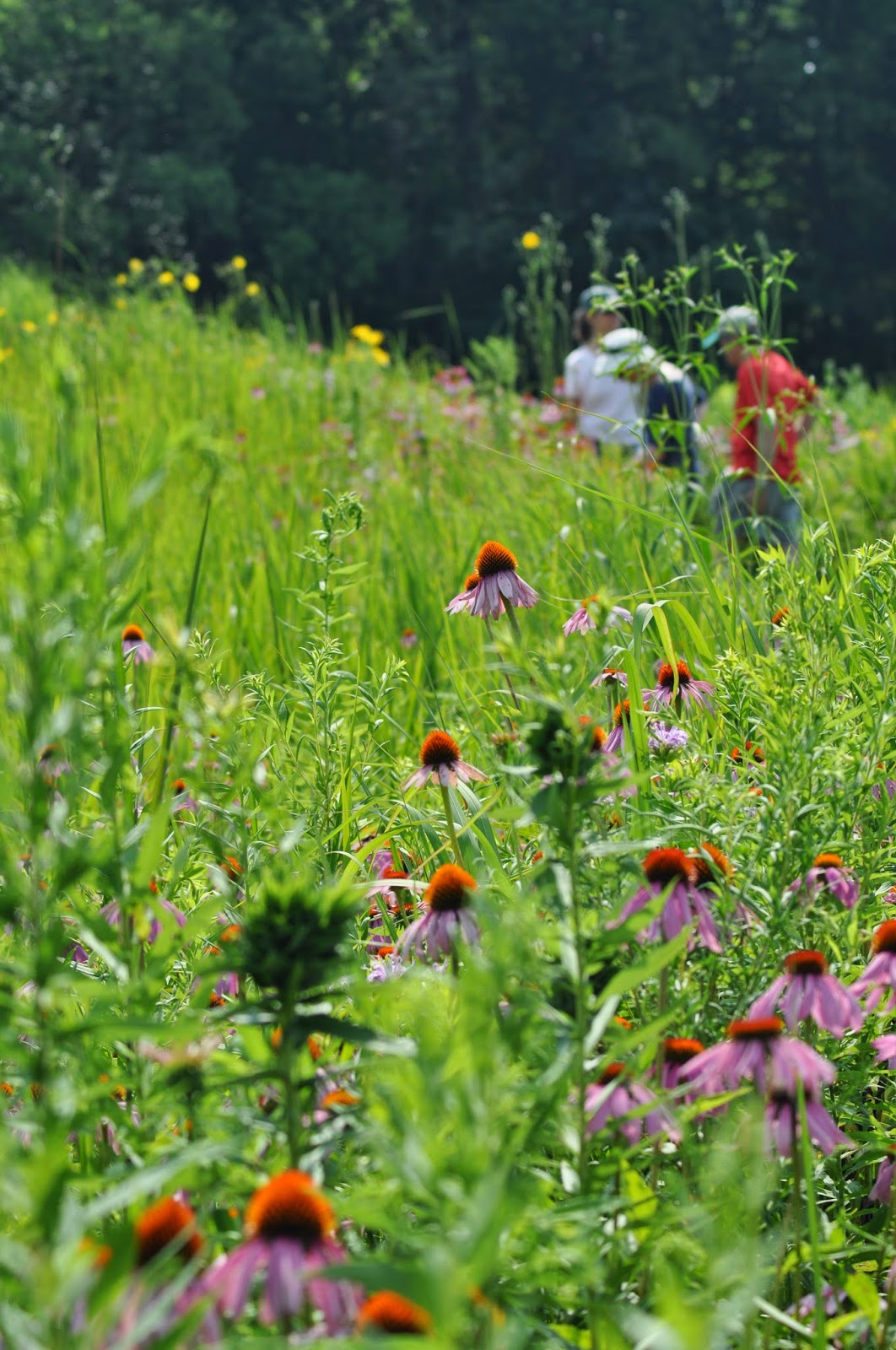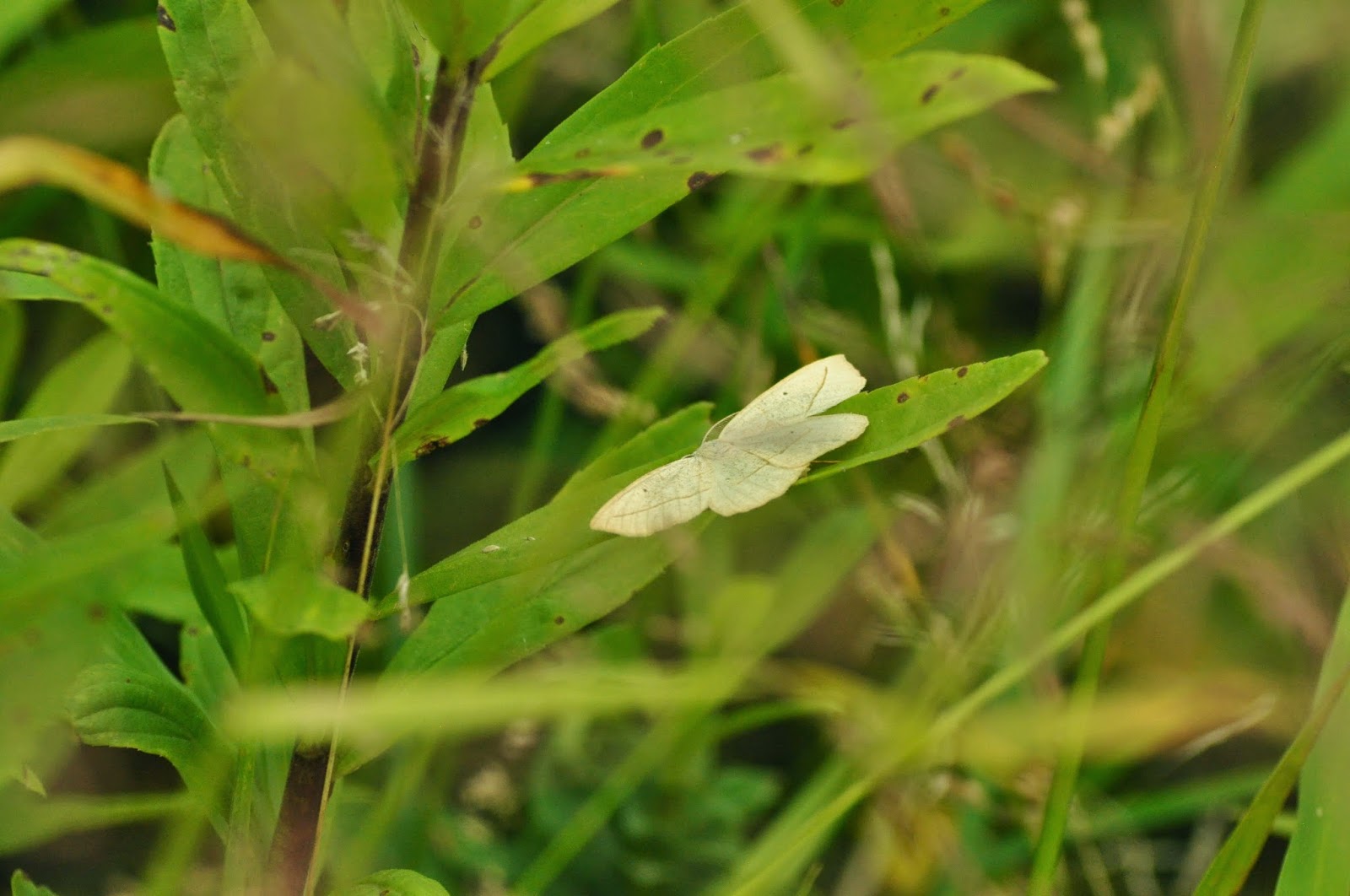Where do you go to if you'd like to protect all or part of your land or land in your neighborhood from development? A land trust organization.
In the United States, you can find the organizations that are in your county by going to the Land Trust Alliance' wesbsite . Click on "Find a Land Trust" and you get a map. Click on your state and then your county and you'll find the land trusts in your county.
For example, in my current county of Knox, Ohio, there are two land trusts: the Owl Creek Conservancy and the Philander Chase Corporation. I joined the Owl Creek Conservancy. Their recent 2014 annual report says that between July 1, 2013 and June 30, 2014, the organization worked with two landowners to complete seven conservation easements totaling 719 acres, more than another square mile of land conserved since their last annual meeting.''
Each of the landowners donated the easements in honor of a deceased loved one. The report also cites a partnership with Kenyon College's Philander Chase Corporation to include a local 386-acre farm in the state's agricultural easement purchase program.
The report also states that since the Owl Creek Conservancy's founding in 2000, the private nonprofit organization has focused special effort on conserving land northwest of the City of Mount Vernon. The report says that, "In addition to being prime farmland, that area is the site of the large aquifer recharge, providing drinking water for more than 40% of the population of Knox County...Five of the seven easements completed since we last met cover 410 acres within this area. They bring our total in this area to 821 acres."
The report explains that "Conservation easements are in essence plans for the future use of land. Land owners are legally empowered by our system of property rights to lay such plans in accord with their desires."
As an example of how the easements work, farmer Dan Galbraith granted an easement to protect two wetlands on his land from being farmed. They are a small area of his land that should not be farmed because the wetlands have many environmental benefits including filtering possible pollutants before they reach waterways and aquifers. Water from Galbraith's land drains into Knox Lake.
The easement carries forwarded perpetually whenever the land changes hands.
The Owl Creek Conservancy's mission is to work with landowners to conserve "farmlands, stream corridors, aquifer-and watershed-protection areas, wildlife habitats, woodlands, scenic vistas, and ecologically sensitive area of environmental, historic, and community importance."
Sometimes people think that such preservation work is against agriculture, but far from it, they work with farmers who want to preserve farmland and not let it be torn apart for business or housing complexes.
Likewise, the Philander Chase Corporation's mission is to "To preserve and maintain the farmland, open spaces, scenic views, and characteristic landscapes surrounding Kenyon College and Gambier, Ohio."
When I moved to Ohio, I felt I had abandoned my life goal of preserving 25,000-plus acres of federal and other public land where I worked in Maryland . But, in fact, the people at the Owl Creek Conservancy helped me learn the first step in the process, contacting the land trust organizations in the counties the land sits on.
Now that I'm back in Ohio, I've become similarly protective of the green space where the Mt. Vernon Developmental Center sits, where I once also worked. I'd hate to see that place close and have its 310 acres of varied natural habitats paved over for more stores or homes. One of many benefits of preserving green space is also reducing vehicle traffic and Vernonview Road, which passes the Center, is already clogged.
Donating easements or land to the Owl Creek Conservancy or similar land trust not only benefits the community and the environment, but also may bring significant tax breaks to landowners.
For example, in my current county of Knox, Ohio, there are two land trusts: the Owl Creek Conservancy and the Philander Chase Corporation. I joined the Owl Creek Conservancy. Their recent 2014 annual report says that between July 1, 2013 and June 30, 2014, the organization worked with two landowners to complete seven conservation easements totaling 719 acres, more than another square mile of land conserved since their last annual meeting.''
Each of the landowners donated the easements in honor of a deceased loved one. The report also cites a partnership with Kenyon College's Philander Chase Corporation to include a local 386-acre farm in the state's agricultural easement purchase program.
The report also states that since the Owl Creek Conservancy's founding in 2000, the private nonprofit organization has focused special effort on conserving land northwest of the City of Mount Vernon. The report says that, "In addition to being prime farmland, that area is the site of the large aquifer recharge, providing drinking water for more than 40% of the population of Knox County...Five of the seven easements completed since we last met cover 410 acres within this area. They bring our total in this area to 821 acres."
The report explains that "Conservation easements are in essence plans for the future use of land. Land owners are legally empowered by our system of property rights to lay such plans in accord with their desires."
As an example of how the easements work, farmer Dan Galbraith granted an easement to protect two wetlands on his land from being farmed. They are a small area of his land that should not be farmed because the wetlands have many environmental benefits including filtering possible pollutants before they reach waterways and aquifers. Water from Galbraith's land drains into Knox Lake.
The easement carries forwarded perpetually whenever the land changes hands.
The Owl Creek Conservancy's mission is to work with landowners to conserve "farmlands, stream corridors, aquifer-and watershed-protection areas, wildlife habitats, woodlands, scenic vistas, and ecologically sensitive area of environmental, historic, and community importance."
Sometimes people think that such preservation work is against agriculture, but far from it, they work with farmers who want to preserve farmland and not let it be torn apart for business or housing complexes.
Likewise, the Philander Chase Corporation's mission is to "To preserve and maintain the farmland, open spaces, scenic views, and characteristic landscapes surrounding Kenyon College and Gambier, Ohio."
When I moved to Ohio, I felt I had abandoned my life goal of preserving 25,000-plus acres of federal and other public land where I worked in Maryland . But, in fact, the people at the Owl Creek Conservancy helped me learn the first step in the process, contacting the land trust organizations in the counties the land sits on.
Now that I'm back in Ohio, I've become similarly protective of the green space where the Mt. Vernon Developmental Center sits, where I once also worked. I'd hate to see that place close and have its 310 acres of varied natural habitats paved over for more stores or homes. One of many benefits of preserving green space is also reducing vehicle traffic and Vernonview Road, which passes the Center, is already clogged.
Donating easements or land to the Owl Creek Conservancy or similar land trust not only benefits the community and the environment, but also may bring significant tax breaks to landowners.











































